Iris L.
Iridaceae
Acorus, Butomus, Hymenocallis, Lachnanthes, Philydrum, Sparganium, Typha
northern temperatetemperate:
(adj) of the climatic zone between boreal and tropical

Iris ensata Thunb. (Asia) and cultivars
I. fulva Ker Gawl. and hybrids
I. laevigata Fisch. and cultivars
I. pseudacorus L.
I. versicolor L.
I. virginica L.
Numerous terrestrialterrestrial:
(adj) growing on land as opposed to living in water
 species are introduced into many countries; many aquatics are established beyond botanical gardens, etc.
species are introduced into many countries; many aquatics are established beyond botanical gardens, etc.
Iris ensata Thunb. and I. pseudacorus L. are introduced into the United States.
I. laevigata Fisch. is introduced into Australia.
I. versicolor L. is introduced into parts of Europe and Asia.
Iris douglasiana Herbert, I. missouriensis Nutt., and I. pseudacorus are considered noxious weeds by some.
emergentemergent:
(adj) (syn. emersed) with parts raised out of the water; extending up out of the water
 , riparianriparian:
, riparianriparian:
(adj) growing by rivers or streams; of, adjacent to, or living on, the banks of a river, lake, pond, etc.
 rhizomatous rosetterosette:
rhizomatous rosetterosette:
(n) a radiating cluster of leaves, usually close to the ground at the base of a plant
 plant
plant
Perennial. Creeping rhizomerhizome:
(n) an underground stem, usually growing horizontally, from which both roots and shoots emerge directly; the thick, above-ground stem of ferns
 . Leaves rigid, flat, smooth and elongate-linear, distichousdistichous:
. Leaves rigid, flat, smooth and elongate-linear, distichousdistichous:
(adj) (of leaves or flowers) distinctly arranged in two ranks along an axis; leaves may be opposite or alternate
 , equitantequitant:
, equitantequitant:
(adj) (of leaves) in two rows or ranks, overlapping and folded lengthwise, the whole effect fan-like as in the Iridaceae
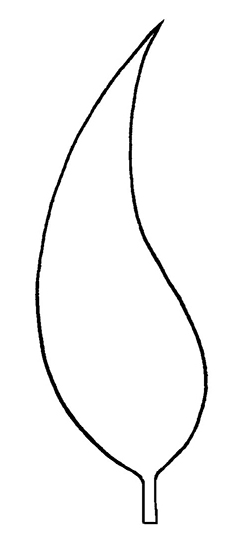 , overlapping each other but appearing to be in a rosetterosette:
, overlapping each other but appearing to be in a rosetterosette:
(n) a radiating cluster of leaves, usually close to the ground at the base of a plant
 . Inflorescenceinflorescence:
. Inflorescenceinflorescence:
(n) the arrangement of flowers on the floral axis
 a solitary flower or paniclepanicle:
a solitary flower or paniclepanicle:
(n) an indeterminate, branched (often much-branched) inflorescence; the ultimate units may be of a different inflorescence type
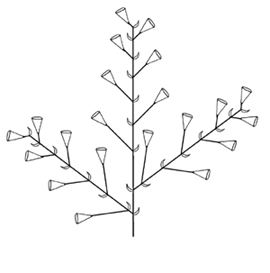 . Flowers large, showy, subtended by a spathespathe:
. Flowers large, showy, subtended by a spathespathe:
(n) a large bract or bracts subtending and often enclosing an inflorescence
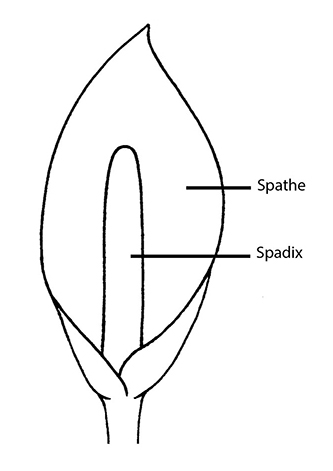 -like bractbract:
-like bractbract:
(n) a modified leaf near a flower or inflorescence, often reduced, sometimes large and/or petaloid; also glumes, lemmas, and paleae of grass spikelets
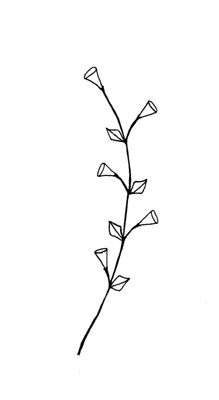 ; perianthperianth:
; perianthperianth:
(n) collective term for the calyx and corolla of a flower; also used for floral whorl(s) in which the calyx and corolla cannot be resolved; any of the leaves or bracts surrounding the sex organs of bryophytes
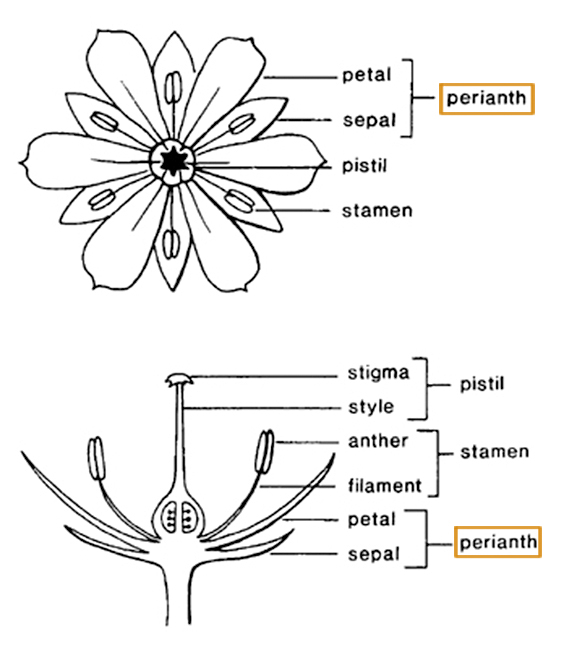 of 6 tepals in 2 similar series; outer series deflexeddeflexed:
of 6 tepals in 2 similar series; outer series deflexeddeflexed:
(adj) bent abruptly downward
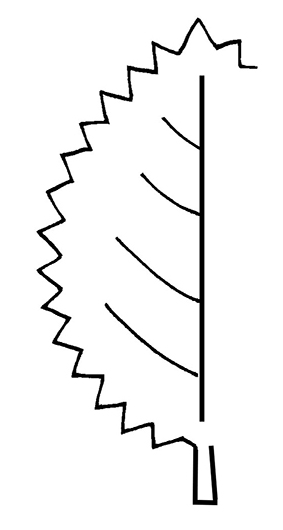 , inner series erect. Dispersal by rhizomerhizome:
, inner series erect. Dispersal by rhizomerhizome:
(n) an underground stem, usually growing horizontally, from which both roots and shoots emerge directly; the thick, above-ground stem of ferns
 division and seeds.
division and seeds.
wet ground and littorallittoral:
(adj) of or along the shore
 region of lakes, swamps, and rivers
region of lakes, swamps, and rivers
A genus containing over 300 species and many cultivated varieties. Most aquatic species belong to the section Apogon.